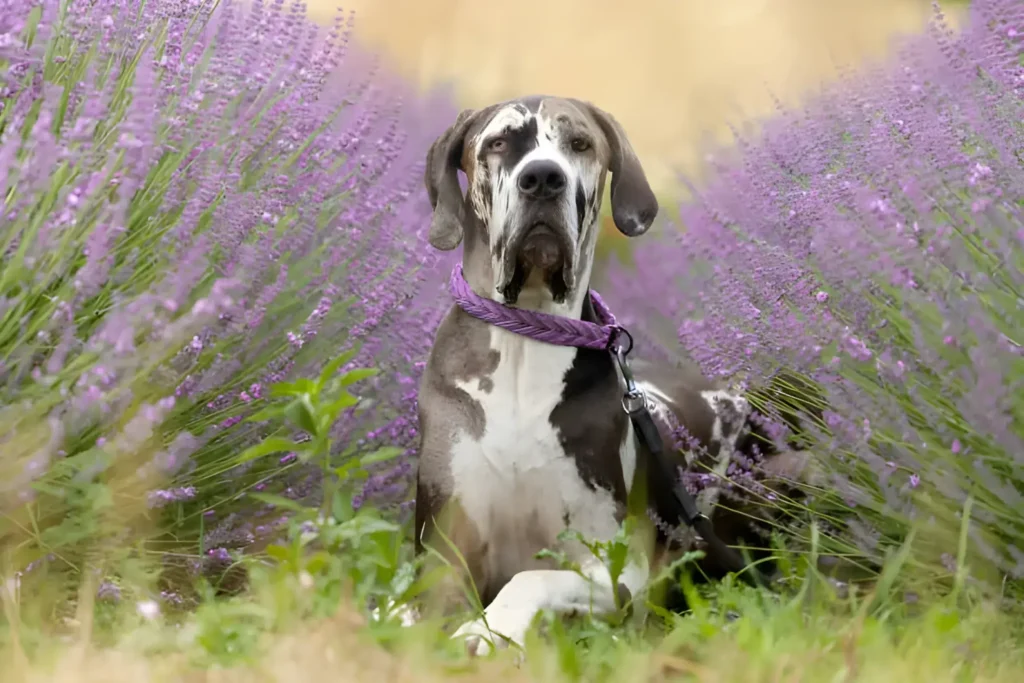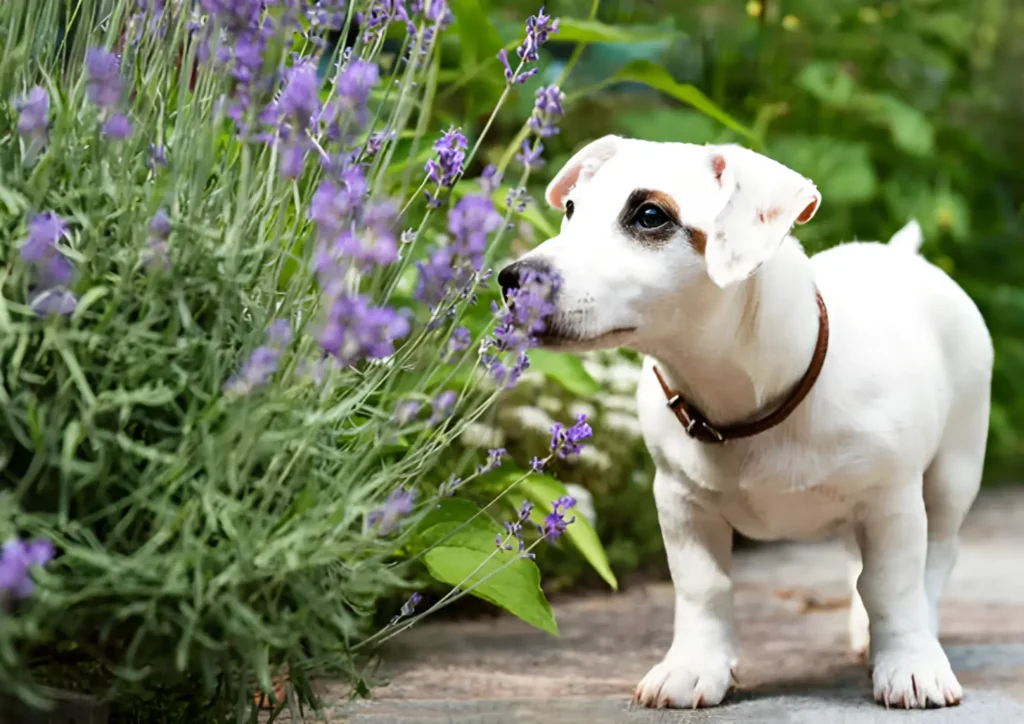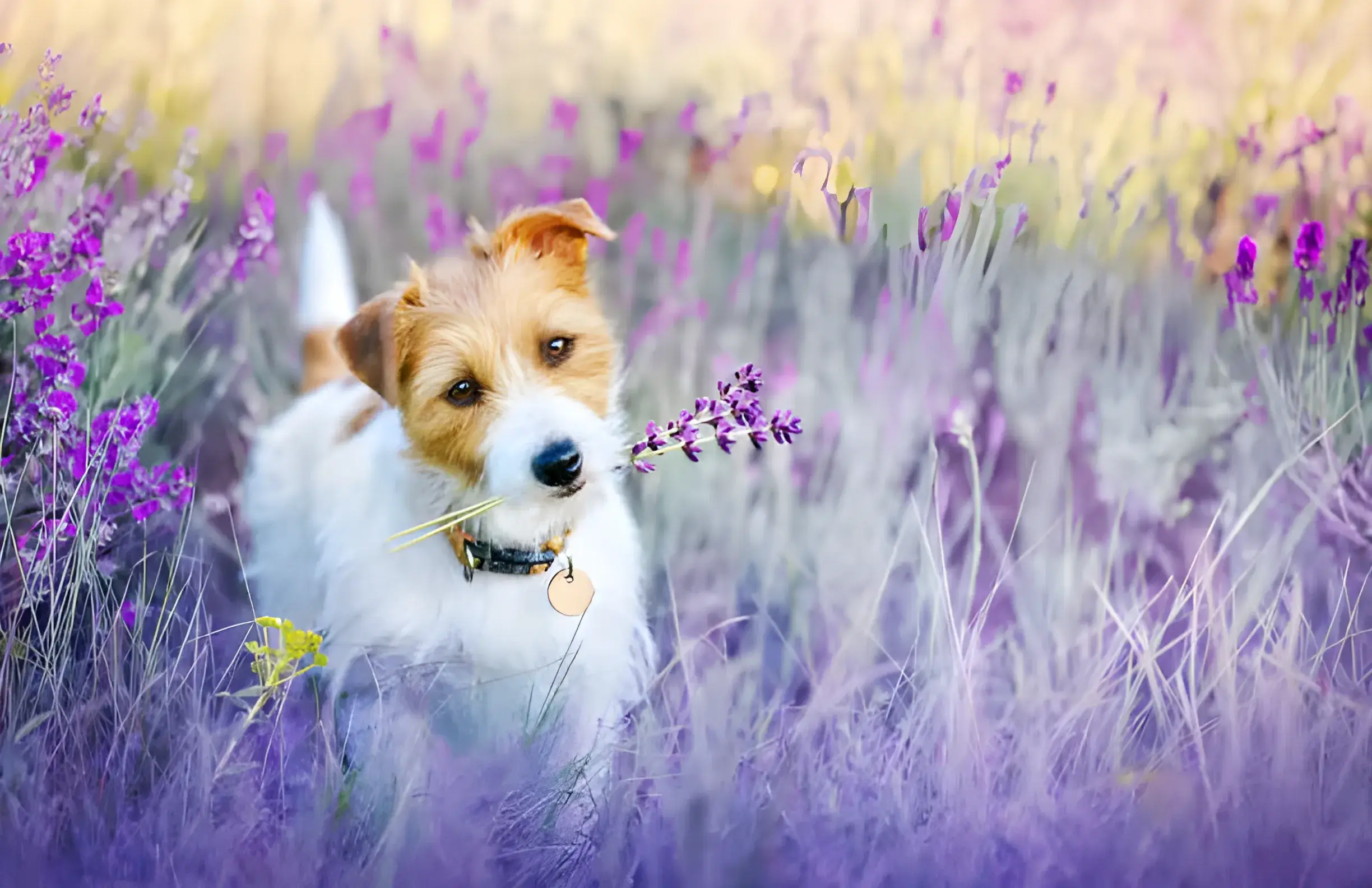Yes, lavender can be harmful to dogs. The culprit is linalool, a compound found in both the lavender plant and its essential oils. While small amounts may not cause issues, larger quantities can lead to lavender poisoning in dogs.
Understanding Linalool Toxicity in Dogs
Lavender plants themselves contain relatively low levels of linalool. However, lavender essential oils are highly concentrated, making them potentially more dangerous. Dogs have a heightened sense of smell, further increasing their sensitivity to its effects.
Symptoms of Lavender Poisoning in Dogs
Symptoms of lavender poisoning can vary depending on the amount of lavender consumed and the individual dog. Common signs include:
Mild Symptoms:
- Vomiting
- Diarrhea
- Decreased appetite
- Lethargy
- Skin irritation (especially with topical exposure)
Severe Symptoms:
- Drooling
- Weakness
- Tremors
- Incoordination
- Low heart rate
- Difficulty breathing
What to Do if You Suspect Lavender Poisoning

If you think your dog has ingested any form of lavender, act quickly:
Remove the Source: Prevent your dog from accessing any more lavender. If you witness your dog ingesting lavender, remove any remaining plant material or essential oil bottle from their reach.
Contact Your Vet: Call your vet or an emergency animal hospital immediately. Describe what form of lavender your dog has been exposed to and the amount, if possible. (If possible, try to gather any leftover lavender or the container it came in. This information will be valuable for the veterinarian in determining the appropriate treatment)
Follow Vet’s Instructions: The necessary treatment may range from at-home monitoring to supportive care at the veterinary clinic.
Stay Calm: While acting quickly is crucial, avoid stressing your dog further. Keep them comfortable and monitor their breathing until veterinary help arrives.
The Importance of Veterinary Care
While mild cases of lavender exposure might resolve on their own, it’s crucial to seek veterinary advice. They can determine the severity of your dog’s condition and recommend the best course of action.
Protecting Your Dog from Lavender Exposure
Prevention is the best medicine. Here’s how to keep your furry friend safe:
Limit Lavender Indoors: Keep lavender plants out of reach. If you use essential oils, ensure they are securely stored and diffused only in well-ventilated areas away from your dog.
Be Vigilant Outdoors: If you have lavender in your garden, supervise your dog to prevent them from nibbling.
Choose Dog-Safe Alternatives: Opt for calming scents like chamomile that are generally considered safer for dogs. Always consult your vet for guidance.
Real-Life Examples of Lavender Poisoning in Dogs

Case 1: A young Labrador retriever ingested a significant amount of spilled lavender essential oil while playing in a room where it was being diffused. The dog experienced vomiting, tremors, and difficulty walking. A quick trip to the vet and supportive care led to a full recovery. This case highlights the dangers of essential oils and the importance of keeping them out of reach.
Case 2: An older Beagle with a history of scavenging chewed on a lavender plant in the garden. He showed mild lethargy and loss of appetite, but these symptoms subsided within a day. This case demonstrates how the amount ingested can significantly influence the severity of symptoms.
Safe Alternatives for Managing Dog Anxiety
Understandably, you want to create a serene environment for your furry friend. Here are some effective options to consider, always in consultation with your veterinarian:
The Power of Exercise: Daily walks, engaging fetch sessions, and structured training exercises provide mental and physical release, reducing overall stress levels.
Brain Games: Puzzle feeders, interactive toys, and scent work challenges keep your dog focused, tire them out in a positive way, and can lessen anxious behaviors.
Tackling Triggers: For dogs with specific fears (like thunderstorms or car rides), a certified animal behaviorist can guide you through careful desensitization and counterconditioning for long-term management.
Veterinary Support: Certain calming supplements specially formulated for dogs might be beneficial. Your vet can assess your dog’s needs and recommend safe, appropriate options.
Conclusion
Lavender, beloved for its fragrance and calming properties for humans, can pose a risk to our canine companions. By understanding the dangers of linalool, taking preventative measures, staying informed about first-aid steps, and seeking swift veterinary care if needed, you can help ensure your dog enjoys a safe and lavender-free environment.
The photo featured below the post headline is Credit: Wavetop/istockphoto
I hope you find this post helpful and informative. If Yes’ feel free to share it with your friends!
Frequently Asked Question
Is any amount of lavender toxic to dogs?
While small amounts might not cause significant harm, it’s safest to avoid any exposure to prevent potential risks.
Can my dog die from lavender poisoning?
While rare, severe poisoning can be fatal, emphasizing why seeking prompt veterinary attention is crucial.
Is lavender oil effective for repelling fleas on my dog?
Unfortunately, no. Lavender oil doesn’t offer reliable protection against fleas.
Is lavender safe to diffuse around dogs?
Diffusing lavender essential oils can be harmful to dogs due to their sensitive respiratory systems and potential inhalation of linalool. Choose dog-safe alternatives instead.
Is the scent of lavender toxic to dogs?
While the scent alone is unlikely to cause severe poisoning, it’s best to minimize exposure, especially for dogs with respiratory sensitivities.
Can I smoke lavender around my dog?
No, any form of secondhand smoke poses risks to your dog’s health, including smoke from lavender. Keep the environment smoke-free for your pet’s well-being.
My dog ate dried lavender, what should I do?
Contact your veterinarian immediately, even if it’s a small amount of dried lavender. They can assess the risk and advise you on the best course of action.
Can lavender oil cause seizures in dogs?
There’s some evidence suggesting a potential link between essential oils and seizures in susceptible dogs. If your dog has a seizure disorder, lavender should be strictly avoided.
How long does it take for lavender poisoning symptoms to show in dogs?
Symptoms can appear within hours of exposure, or sometimes be delayed. Closely monitor your dog if you suspect they’ve consumed any lavender.
Can lavender plants make dogs sick?
Yes, while containing lower levels of linalool, ingesting parts of the lavender plant can upset your dog’s stomach and lead to potential risks.
Are any other plants toxic to dogs besides lavender?
Yes, many common plants are toxic to dogs. Research any plants in your home and garden for potential toxicity, and seek veterinary advice if needed.

